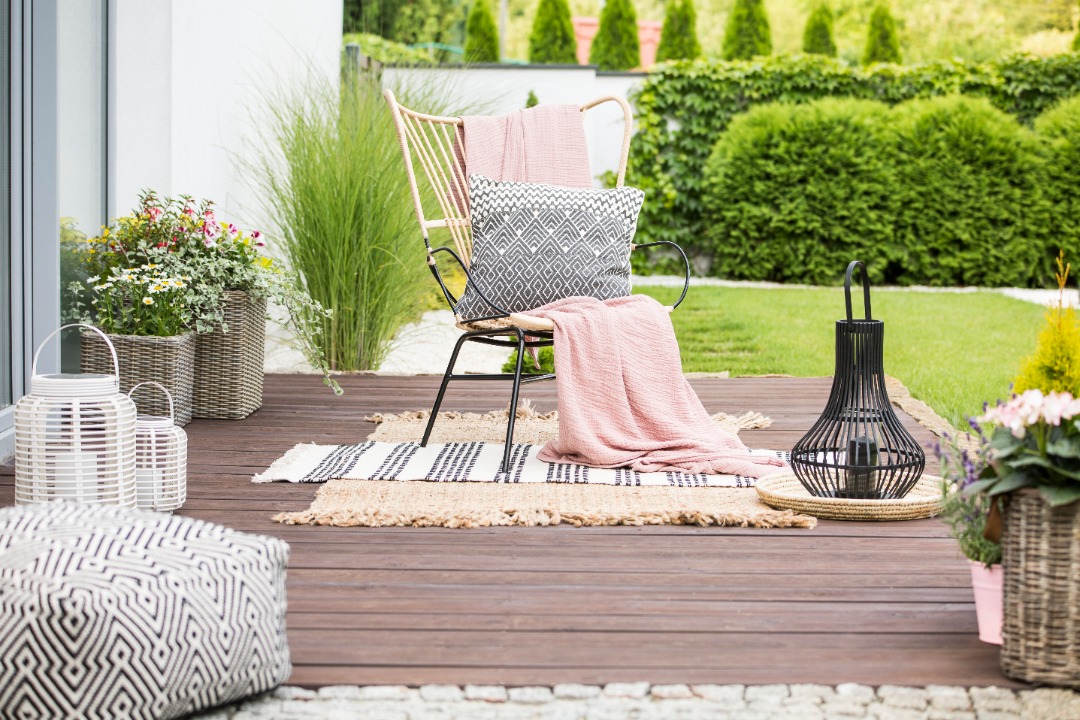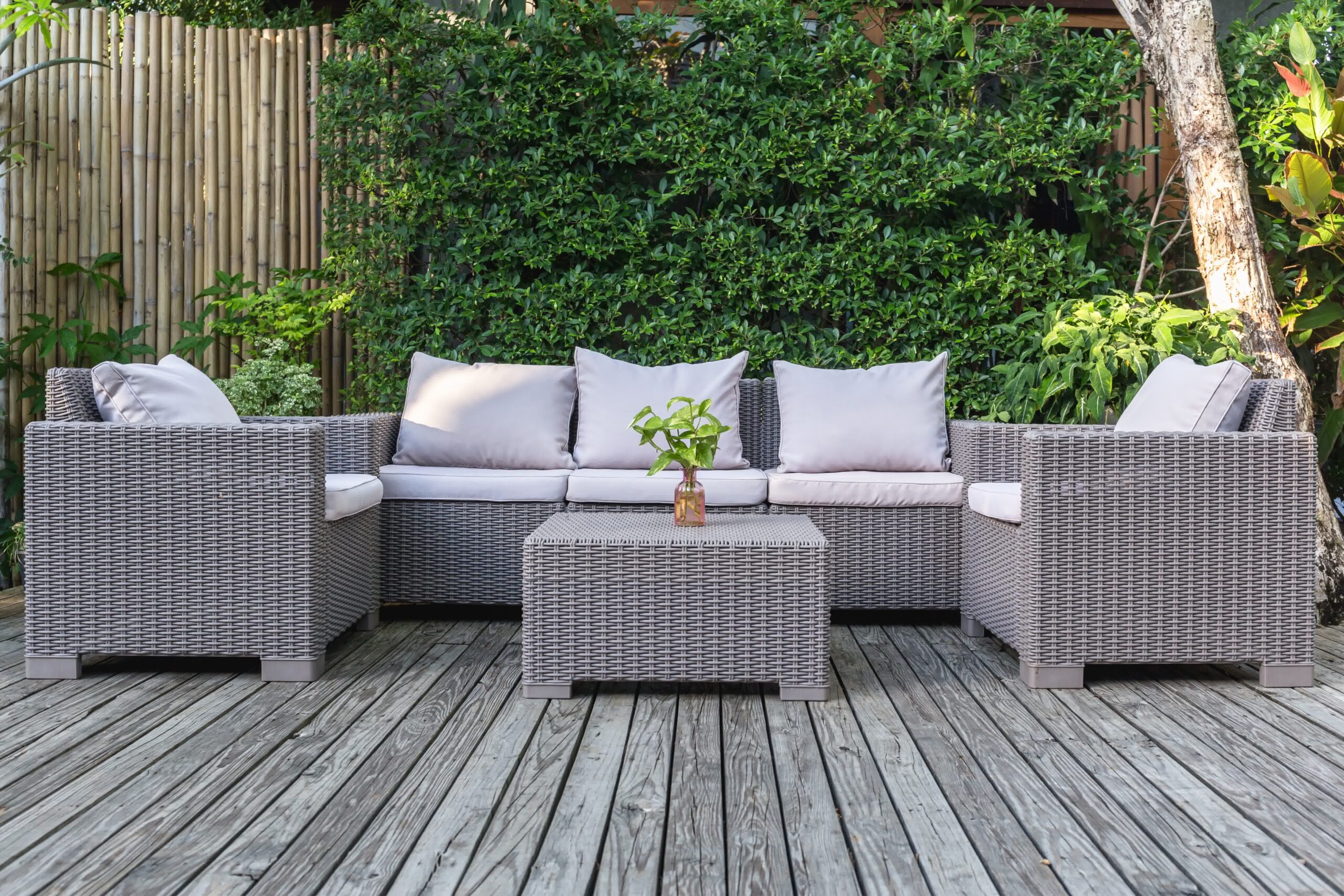Introduction: Choosing materials can feel like the hardest part of deck construction. Once the wood is settled, the rest of the plan clicks into place. This guide breaks down what truly matters so you can pick the board that looks beautiful today and still feels solid underfoot years from now.
Key Factors to Apply for Deck Construction
Deck Durability and Construction
Long-lasting deck construction starts with understanding how wood behaves in outdoor conditions. Sunlight, rain, foot traffic, and temperature swings constantly push on boards and fasteners. Dense hardwoods like ipe take that pressure in stride, resisting dents and surface wear while holding fasteners tight. Cedar handles moisture gracefully with natural oils that discourage rot and insects, and it stays comfortable to the touch in summer heat. The right choice comes from matching the board’s cellular structure to the conditions it will live in, then pairing it with proper framing, spacing, and ventilation.
Construction details amplify or undercut any material’s strengths, which is why it pays to consider the entire system. Joist spacing influences board span and feel, so heavier woods can provide wider spacing while softer woods prefer closer support. End sealing, predrilling for hardwoods, and corrosion-resistant screws help prevent splitting and staining. Thoughtful flashing at the ledger, adequate drainage, and an air gap above solid surfaces all keep moisture from lingering. A deck that is engineered for its environment is the one that ages gracefully.
Factor in the Installation and Maintenance Costs
Every deck type tells a different budget story over time, and it is smarter to look at the full arc rather than just the upfront price. Cedar usually lands in a comfortable middle range and accepts stains easily, so refinishing is manageable if you like periodic refreshes. Ipe costs more to install because it requires predrilling and prefers premium fasteners, but it compensates with outstanding longevity and minimal surface wear. Pressure-treated options can start low in cost, then require more frequent cleaning and sealing to stay sharp. Each path can work, depending on where you want to invest your energy and dollars.
Regular care does not have to be complicated, but it does need to be consistent. A gentle wash to remove pollen and grit, a clear or lightly pigmented sealer to block UV rays, and quick attention to standing water will extend the lifespan of any deck construction project. Budget for hardware upgrades for corrosive landscaping environments, consider oil-based finishes for dense hardwoods, and give fresh boards time to acclimate before sealing. Little habits add up, and they save homeowners from larger repairs that eat into time and money.

What is the Best Kind of Wood for Deck Construction?
Why It’s So Important to Choose the Right Wood
The wood you pick influences everything from safety to comfort. Some boards run cool and smooth, others heat up quickly or splinter as they dry. Dense hardwoods resist gouges from furniture legs and pet claws, which keeps surfaces cleaner and safer for bare feet. Softer woods can still shine with the right finish, though they appreciate a bit more kindness when moving grills and planters around. Matching material to lifestyle makes daily use feel easy rather than delicate.
Looks matter too, and they mature over time. Wood weathers to a silver gray if left untreated, cedar shifts to a soft driftwood tone, and stained finishes can lean rustic or contemporary depending on color and sheen. Grain pattern and knot character affect how a deck reads, along with landscaping, siding, and trim. When the wood complements the home’s shape and the yard’s plant palette, everything feels intentional, almost like the deck has always belonged there.
What is the Best Kind of Wood for the Austin TX Climate?
Austin TX brings intense sunshine, long warm seasons, and bursts of stormy weather, so the best material thrives in heat while standing firm against UV and sudden downpours. Ipe excels here, with density that shrugs off surface wear and tight grain that resists moisture intrusion. It likes a UV oil to hold color, yet it remains stable even when left to weather naturally. Cedar stays cooler underfoot than many boards, a relief on bright afternoons, and its natural resins help protect against decay. It appreciates regular sealing to maintain tone and to resist the kind of sun fade that can creep in after a few seasons.
Movement matters in this climate, so allow boards room to expand and breathe. Good airflow beneath the frame, careful joist spacing, and end sealing keep edges from drying out too quickly. Where trees and landscaping cast shifting shade, plan for a finish schedule that suits both protected and exposed zones. With the right materials and a tuned installation, deck construction in Austin TX can stand up to the weather while still feeling inviting in the hottest months.

Why You Should Consider Professional Deck Construction
Get Expert Insights and Great Advice
Professional builders bring hard-won experience that protects your outdoor living space from the kinds of pitfalls that do not show up on inspiration boards. They read soil, drainage, and grade, then set footing depth and placement to match. They calculate spans for the chosen wood, confirm local code for guardrails and stairs, and flash the ledger to prevent hidden moisture problems. That attention is quiet, yet it is exactly what keeps a deck solid and safe when storms roll through or a party fills every corner.
Material guidance is another advantage. A pro knows how ipe reacts if installed too tight, when cedar needs back priming, and which fasteners prevent staining around pools or coastal air. They help align wood choice with budget, maintenance style, and design, so you do not overbuy thickness or underbuild in high-traffic paths. That kind of advice narrows choices without limiting creativity, which saves stress while preserving the look you had in mind.
Save Yourself the Time and Money
Good deck construction avoids rework, and rework is where costs balloon. Misplaced footings, undersized framing, and rushed flashing can all lead to callbacks or repairs that eat weekends and wallets. A well-planned build schedule coordinates inspections, material deliveries, and finish windows, which shortens the overall timeline. That means less disruption at home and a faster path to enjoying the space with a morning coffee or a late evening unwind.
Over time, efficiency keeps paying dividends. A properly sealed cedar deck holds color longer between refreshes, and an ipe surface installed with the right fasteners does not need constant tinkering. Professionals often provide care guides or maintenance options that simplify seasonal touch-ups. With a clear plan and the right partner, the deck keeps its shape and charm, and your future self gets to spend more time relaxing than repairing.

Conclusion
If the material decision has you stuck, that is normal, and it is fixable. A short conversation can sort priorities, match them to a wood that fits the climate, then map out the construction details that make it last. Southern Love helps homeowners turn uncertainty into a clear plan, from choosing between ipe and cedar to planning finishes that complement existing landscaping. Reach out to schedule a quick consultation, share your vision and constraints, and get a no-pressure plan that makes deck construction feel straightforward. When you are ready to move forward, contact Southern Love to get started.

SERVICES
Landscaping
Fire Pits
Patios
Driveways
Pavers
Landscape Lighting
Hardscaping
Retaining Walls
Artificial Turf
Landscape Design
Pergola Patios
Mulching
Sod Installation
Outdoor Living Space
Concrete
Irrigation Installation
Lawn Maintenance
Yard Clean Up
Irrigation Repair
Lawn Mowing
Fence Installation
Deck Construction
French Drains

"*" indicates required fields
 nikk@southernlovelandscaping.com
nikk@southernlovelandscaping.com